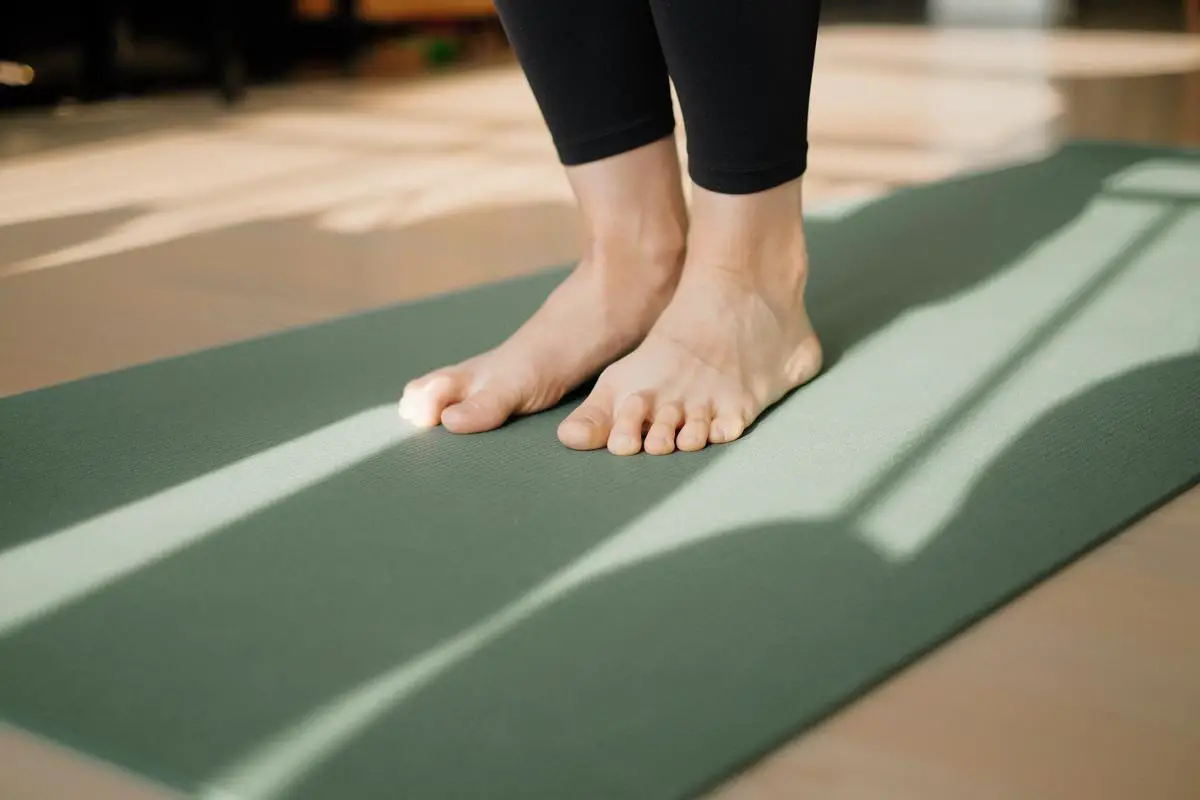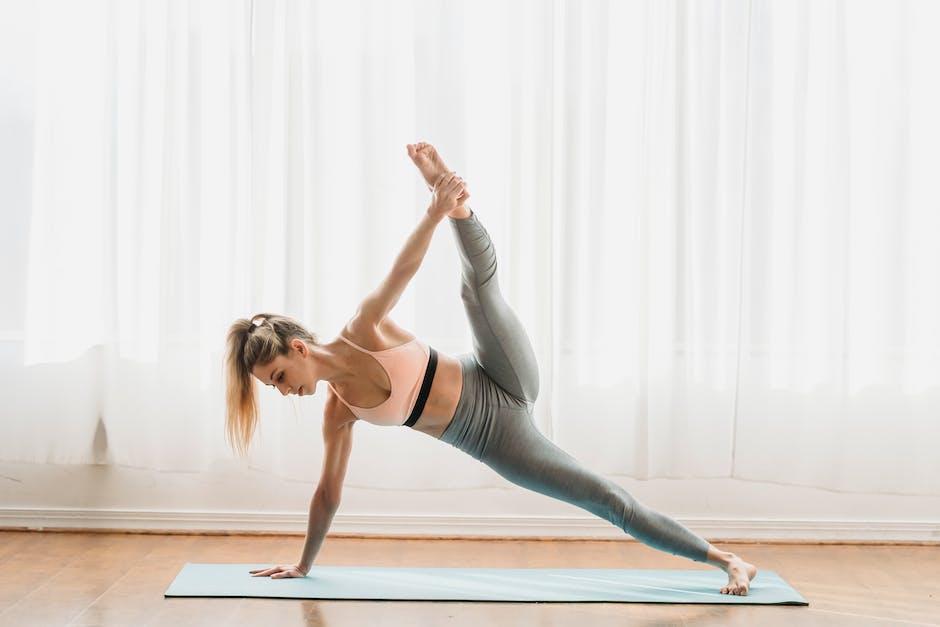Celebrity Fitness Routines to Inspire Your Workout
Staying fit and healthy is essential for everyone, including celebrities who are constantly in the spotlight. Many of these stars have distinctive fitness routines that help them maintain their physique and stamina for their demanding careers. In this listicle, we will explore the workout regimens of some of the world’s most famous celebrities, from intense weightlifting sessions to calming yoga practices. Get ready to be inspired by these famous fitness enthusiasts and learn how they stay in top shape through hard work and dedication.
Dwayne ‘The Rock’ Johnson’s Training Regime
When it comes to crushing it at the gym, nobody does it quite like Dwayne “The Rock” Johnson. With a training regime as intense as his movie stunts, The Rock goes above and beyond to maintain his jaw-dropping physique. So, what does it take to work out like one of Hollywood’s fittest action heroes? Let’s dive into the sweat-drenched details.
The foundation of The Rock’s workout routine consists of heavyweight training, circuit training, and heart-pumping cardio sessions. This renowned fitness machine takes no days off, spending six days a week in the gym and wringing out every ounce of sweat as he pushes his limits.
To make his workouts even more challenging, The Rock targets different muscle groups each day, ensuring that his entire body gets a thorough workout. This daily muscle-blasting routine has him alternating between focused exercises for his back, chest, shoulders, arms, and legs.
It’s not just about lifting heavy weights for Dwayne Johnson, though. The Rock also makes sure to add circuit training into his routine, working through high-intensity exercises that elevate his heart rate and keep his muscles guessing. This type of training not only fuels his power and strength but also refines his agility, endurance, and overall athletic performance.
Don’t think for a moment that The Rock skips out on cardio. Early morning hours see our favorite action star logging in 30-50 minutes of intense cardio sessions, kickstarting his day and revving up his metabolism.
To sum it up, Dwayne “The Rock” Johnson’s training regime is not for the faint-hearted. It takes immense commitment, discipline, and relentless hard work to keep up with his six-day-a-week workout routine. While we may not all aspire to morph into The Rock overnight, adding just a taste of his workout ethos to our own fitness routines may help us all achieve our health goals in the long run. So, are you ready to sweat like The Rock?

Jennifer Aniston’s Yoga and Cardio Routine
Jennifer Aniston is a talented actress and has a toned physique and radiant glow. She incorporates a blend of yoga, cardio, and interval training into her fitness routine.
Jennifer practices yoga three to four times per week to tone her body and improve flexibility and relaxation.
Jennifer also includes cardiovascular exercises, such as running or the elliptical machine, to keep her endurance up and her heart healthy.
Additionally, Jennifer sweetens her fitness recipe with interval training and alternates between intense bursts of activity and brief periods of rest.
Overall, Jennifer’s well-rounded workout routine keeps her physique in shape and contributes to her stunning beauty and poise.

Mark Wahlberg’s Early Bird Workouts
Are you a night owl struggling to find time for fitness? Maybe it’s time to take a cue from Hollywood A-lister Mark Wahlberg and his 3:45 am daily sweat sessions. Known for his incredible physique and work ethic, this talented actor, producer, and former rapper definitely walks the walk when it comes to commitment to fitness.If you’re wondering what keeps Mark in such amazing shape, it all starts before the sun even rises. Embracing a mix of weightlifting, conditioning, and functional training, he maximizes the impact of his workouts by changing things up and pushing his body to its limits.You can find Mark both indoors and outdoors, executing different exercises each day to maintain his enviable results. From the gym to the great outdoors, his workouts may consist of pull-ups, squats, deadlifts, and other strength-building moves, all keeping the actor in top form.Why start so early, you ask? Wahlberg credits his early morning routine with increased mental focus and productivity throughout the day. Not only does he accomplish a strong physical workout, but he is also able to establish a positive mindset and energetic attitude that lasts the entire day.So if you want to jump-start a healthy new lifestyle, consider following in Mark Wahlberg’s footsteps. Trading in those late-night snooze fests for energizing early morning workouts may just be the key to unlocking your full fitness potential. It’s time to get up, get moving, and transform your life.

Photo by good_citizen on Unsplash
Halle Berry’s Fitness and Healthy Lifestyle
The A-list actress Halle Berry, known for her stunning looks and athletic build, definitely knows how to maintain her enviable physique.
A true fitness enthusiast, Halle combines various workout routines to target every muscle in her body.
While most people might envision celebrity fitness routines consisting of extravagant personal trainers and expensive equipment, Berry keeps things simple and effective.
Her workout regimen includes a blend of strength training for muscle toning, cardiovascular exercises for heart health and endurance, yoga to promote flexibility, and kickboxing for her intense fight scenes in various action roles.
Spending at least 30 minutes of her day on cardio, Halle ensures to cover a full-body workout within her busy schedule.
To keep things fresh and challenging, she often switches between exercises and introduces new activities.
Fueling her body with proper nutrition also plays a vital role in Halle’s fitness routine.
She is a firm believer in the benefits of a clean, wholesome diet.
Ensuring her meals are rich in fruits, vegetables, and lean proteins, Halle steers clear from processed foods and unhealthy fats.
This nutrient-packed diet provides her not only with the energy to power through her workouts, but also contributes to her radiant complexion and overall well-being.
Halle Berry’s dedication to living a balanced, healthy lifestyle demonstrates that even with a busy career and family life, prioritizing fitness and nutrition can help one maintain optimal physical and mental health.

Chris Hemsworth’s Thor-inspired Training
From the Land Down Under to the land of Asgard, Chris Hemsworth has proven time and time again that he is worthy of wielding the mighty Mjolnir, both on screen and off. What’s the secret to achieving a god-like body fit for the thunderous hero Thor? It’s all about an unwavering dedication to a workout routine that’s just as intense as the storms his character can conjure.
When he’s not swinging that legendary hammer, Hemsworth hammers away at an exercise regimen focused on three key components: strength training, functional movements, and boxing. After all, what better way to stay in impeccable shape than to combine the rigorousness of superhero training with the lightning-fast agility of a championship boxer?
The Australian actor’s workouts aren’t for the faint of heart. Each session kicks off with bodyweight exercises that run the gamut from pull-ups to dips, push-ups to squats. It’s a continuous series of movements performed at a breakneck pace, designed to simultaneously build muscle and make the sweat pour as if you’d opened up the floodgates of Valhalla.
From there, Hemsworth moves on to resistance work with an arsenal of equipment including resistance bands, kettlebells, and TRX bands. Incorporating these tools allows for functional movements that target multiple muscle groups at once, preparing his body for any high-flying action scene or God of Thunder showdown that might come his way.
But, of course, it wouldn’t be a true superhero workout without some heavy lifting. Chris ups the ante with compound exercises like deadlifts, bench presses, and squats, pushing his body to its absolute limits and beyond. These movements are credited with increasing overall strength and power, as well as building up the kind of muscle mass necessary to take on Loki and his minions one punch at a time.
In combining strength, agility, and endurance, Chris Hemsworth’s Thor-inspired training has made him unstoppable both on screen and off, proving there are no limits to what a little dedication and some good old-fashioned hard work can do. So the next time you’re watching Thor in action, remember that even for superheroes, the real power lies within.

Serena Williams’ Power Tennis Training
As one of the most successful and iconic tennis players in history, Serena Williams has earned her status through relentless dedication, unwavering discipline, and a highly effective fitness routine.
Combining tennis practice, strength training, and cardio, Serena works on every aspect of her game while keeping her body in peak condition.
High-Intensity Interval Training (HIIT) is a key component of Serena’s exercise regimen. Engaging in short, intense bursts of activity followed by periods of rest, HIIT is perfect for improving agility, power, and endurance. This approach not only ensures that Serena’s workouts are efficient but also mimics the fast-paced nature of tennis matches, allowing her to hone her skills both on and off the court.
A testament to her focus on balance and flexibility, Serena also includes yoga in her fitness routine. Incorporating various poses that range from balancing to stretching, yoga addresses muscle imbalances by strengthening underused muscles and lengthening tense ones. Additionally, yoga allows Serena to improve her mental game by developing mindfulness and concentration skills that are essential in high-stakes tennis matches.
In order to maintain her impressive core strength, Serena embarks on a variety of core workouts that challenge every muscle in her midsection. Utilizing exercises such as planks, Russian twists, and medicine ball slams, Serena ensures that her core remains powerful and stable, allowing her to generate exceptional force during her tennis swings.
With a world-class fitness routine extending far beyond the tennis court, Serena Williams demonstrates that success isn’t just about natural talent, but also about dedication and hard work. By adopting a well-rounded approach to her training, Serena has crafted a formula that works for her, helping her remain a dominant force in the world of tennis.

Hugh Jackman’s Wolverine Workouts
Hugh Jackman: Unleashing the Wolverine Within
When it comes to achieving a superhero-worthy body, Hugh Jackman’s dedication to fitness is no secret. Best known for his role as Wolverine in the X-Men film series, Jackman constantly pushes the limits of his physical capabilities, undergoing grueling workouts to prepare for his on-screen transformations.
Workout Routine
At the core of Jackman’s Wolverine workouts is a mix of challenging weightlifting exercises and heart-pumping cardio sessions. From lifting heavy barbells to pushing himself through high-intensity interval training (HIIT) circuits, the commitment Jackman displays in the gym is nothing short of inspiring.
Diet Plan
To keep up with the intense physical demands of his workouts, Jackman adheres to a strict diet plan designed to support muscle growth and provide the energy needed to power through each session. He typically consumes a high-protein, low-carb diet, focusing on nutrient-dense foods like chicken, fish, vegetables, and complex carbohydrates.
Two-a-Days
One key aspect of Jackman’s workout strategy is training twice per day, a method known as “two-a-days.” For his Wolverine physique, Jackman would often engage in heavy lifting, focusing on building strength and muscular size. His sessions involved exercises like deadlifts, squats, bent-over rows, and bench presses – all aimed at achieving a chiseled, superhero-worthy physique.
Functional Strength
As the character Wolverine is fierce, agile, and quick on his feet, Jackman’s workouts also emphasize movements that improve functional strength, power, and explosiveness. To develop these attributes, the actor incorporates plyometrics, agility drills, and bodyweight exercises into his routine. These exercises not only build muscle and strength, but also aid in developing the flexibility, speed, and endurance required to bring the iconic character to life.
Inspiration
While Hugh Jackman’s Wolverine workouts may be demanding and intense, his unwavering dedication to fitness serves as motivation for many aspiring to transform their bodies and reach their full potential. By committing to rigorous training and maintaining discipline in his nutrition, Jackman has truly mastered the art of unleashing the Wolverine within.

Gal Gadot’s Wonder Woman Training
Gal Gadot’s fitness routine covered all aspects of athleticism, including weightlifting, high-intensity interval training (HIIT), and boxing.In addition to traditional workouts, Gadot underwent extensive training in martial arts, including kickboxing, Brazilian Jiu-Jitsu, and sword play.By mastering her character’s combat style both mentally and physically, Gadot became an awe-inspiring portrayal of Wonder Woman.Despite a full-time acting schedule, Gadot remained dedicated to her fitness and training, leaving viewers inspired.

After exploring the fitness routines of these celebrities, it’s clear that hard work, discipline, and dedication are the key to achieving and maintaining a strong and healthy body. Each star has their unique approach to training, catering to their specific needs and goals. By taking inspiration from these routines, we can expand our own fitness regimen and find the right combination of exercises and disciplines that work best for us. So, let’s take a step towards a healthier and fitter life by incorporating some of these celebrity-approved workouts into our daily routine.










